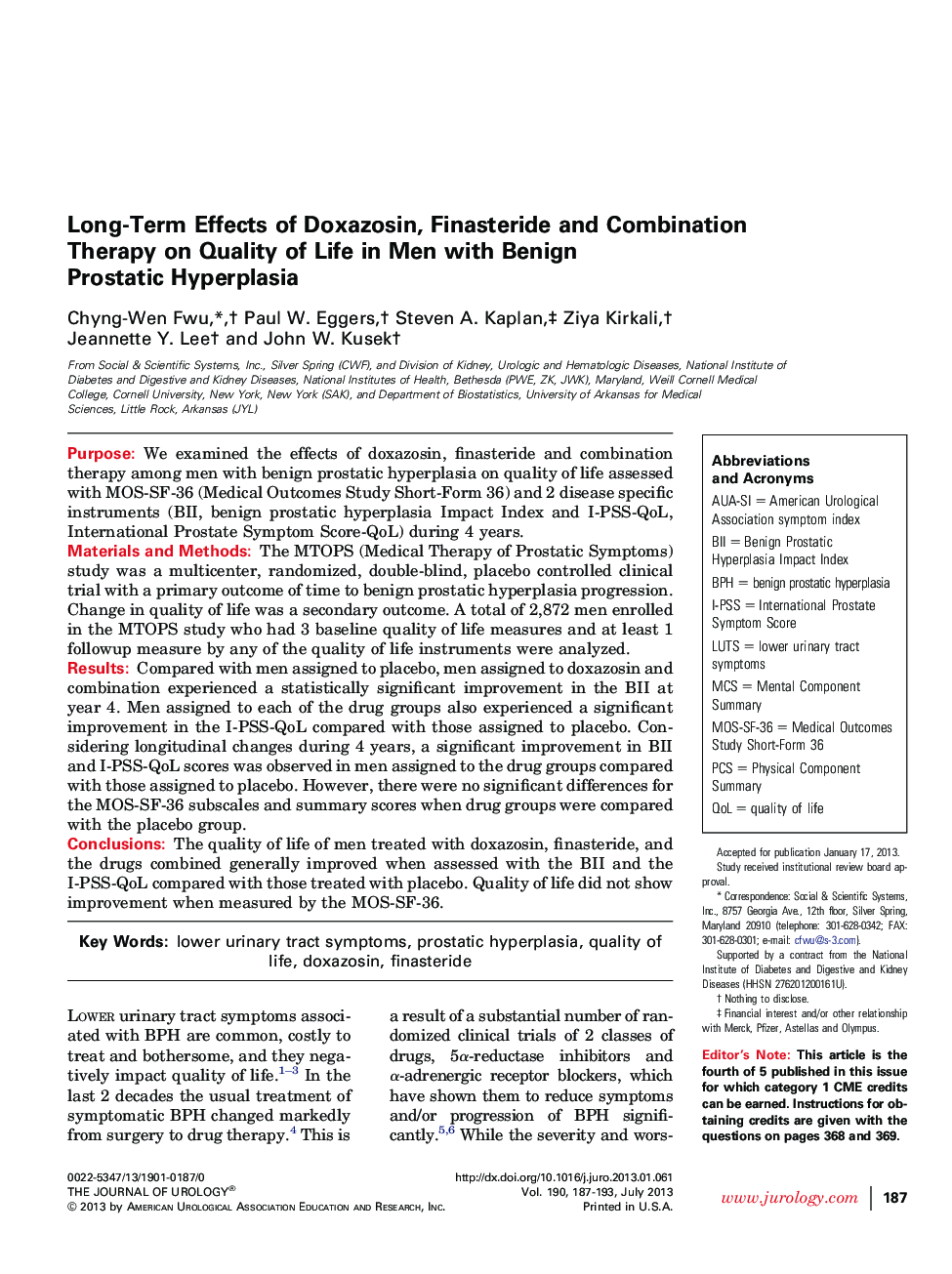| Article ID | Journal | Published Year | Pages | File Type |
|---|---|---|---|---|
| 3866270 | The Journal of Urology | 2013 | 7 Pages |
PurposeWe examined the effects of doxazosin, finasteride and combination therapy among men with benign prostatic hyperplasia on quality of life assessed with MOS-SF-36 (Medical Outcomes Study Short-Form 36) and 2 disease specific instruments (BII, benign prostatic hyperplasia Impact Index and I-PSS-QoL, International Prostate Symptom Score-QoL) during 4 years.Materials and MethodsThe MTOPS (Medical Therapy of Prostatic Symptoms) study was a multicenter, randomized, double-blind, placebo controlled clinical trial with a primary outcome of time to benign prostatic hyperplasia progression. Change in quality of life was a secondary outcome. A total of 2,872 men enrolled in the MTOPS study who had 3 baseline quality of life measures and at least 1 followup measure by any of the quality of life instruments were analyzed.ResultsCompared with men assigned to placebo, men assigned to doxazosin and combination experienced a statistically significant improvement in the BII at year 4. Men assigned to each of the drug groups also experienced a significant improvement in the I-PSS-QoL compared with those assigned to placebo. Considering longitudinal changes during 4 years, a significant improvement in BII and I-PSS-QoL scores was observed in men assigned to the drug groups compared with those assigned to placebo. However, there were no significant differences for the MOS-SF-36 subscales and summary scores when drug groups were compared with the placebo group.ConclusionsThe quality of life of men treated with doxazosin, finasteride, and the drugs combined generally improved when assessed with the BII and the I-PSS-QoL compared with those treated with placebo. Quality of life did not show improvement when measured by the MOS-SF-36.
